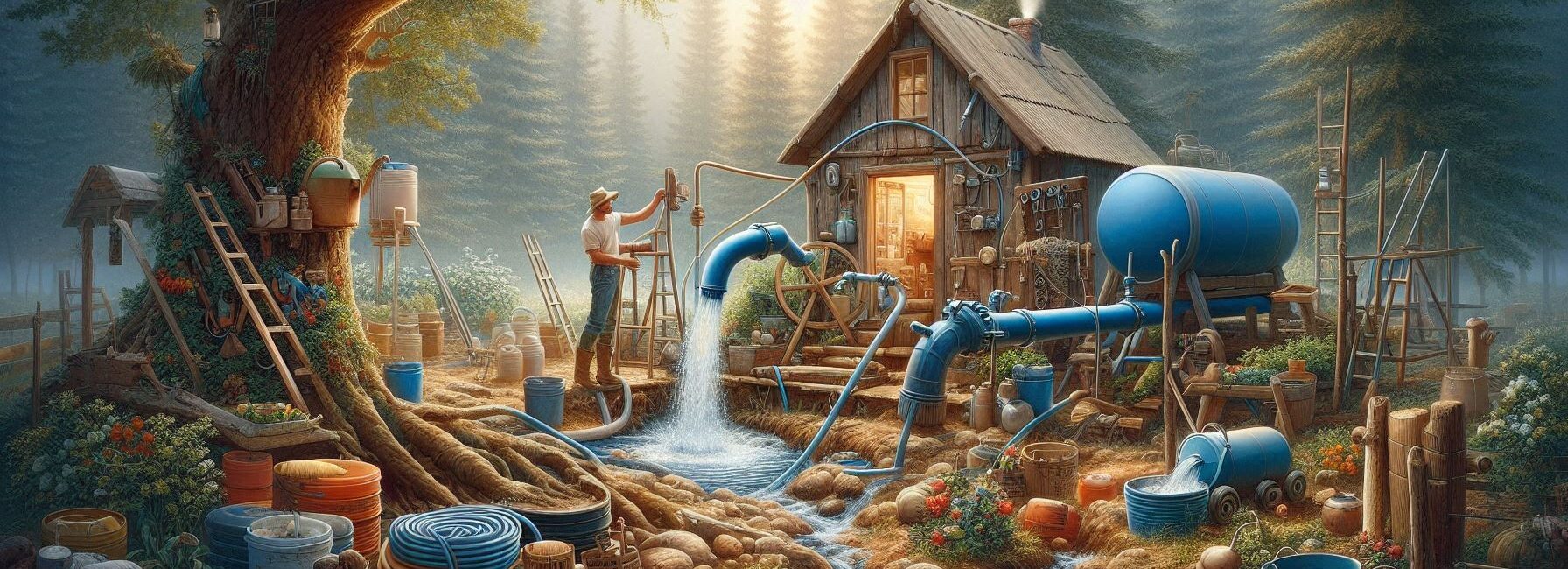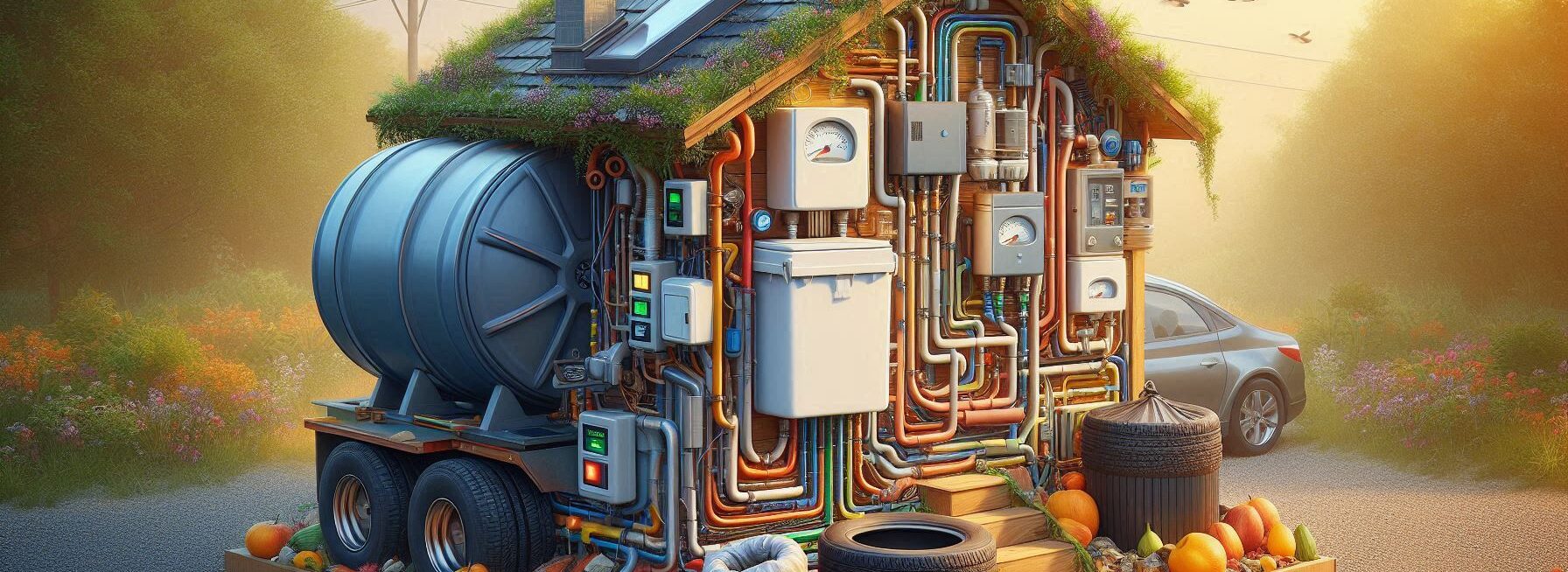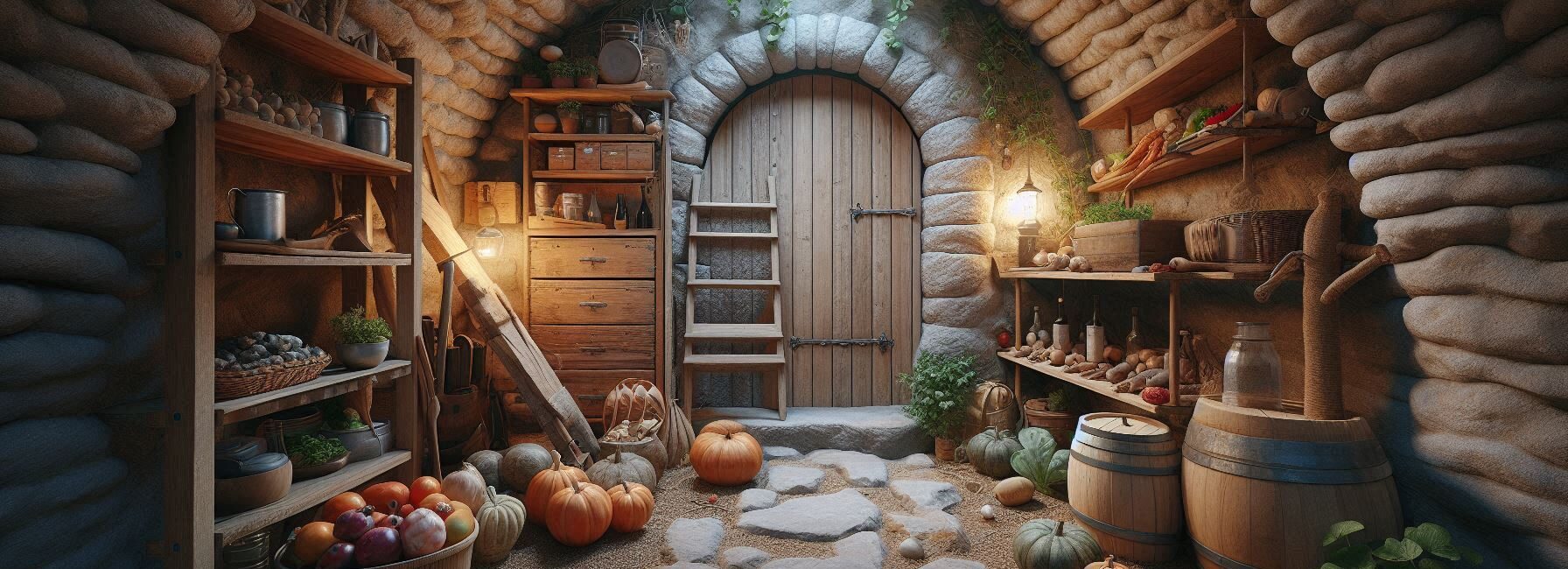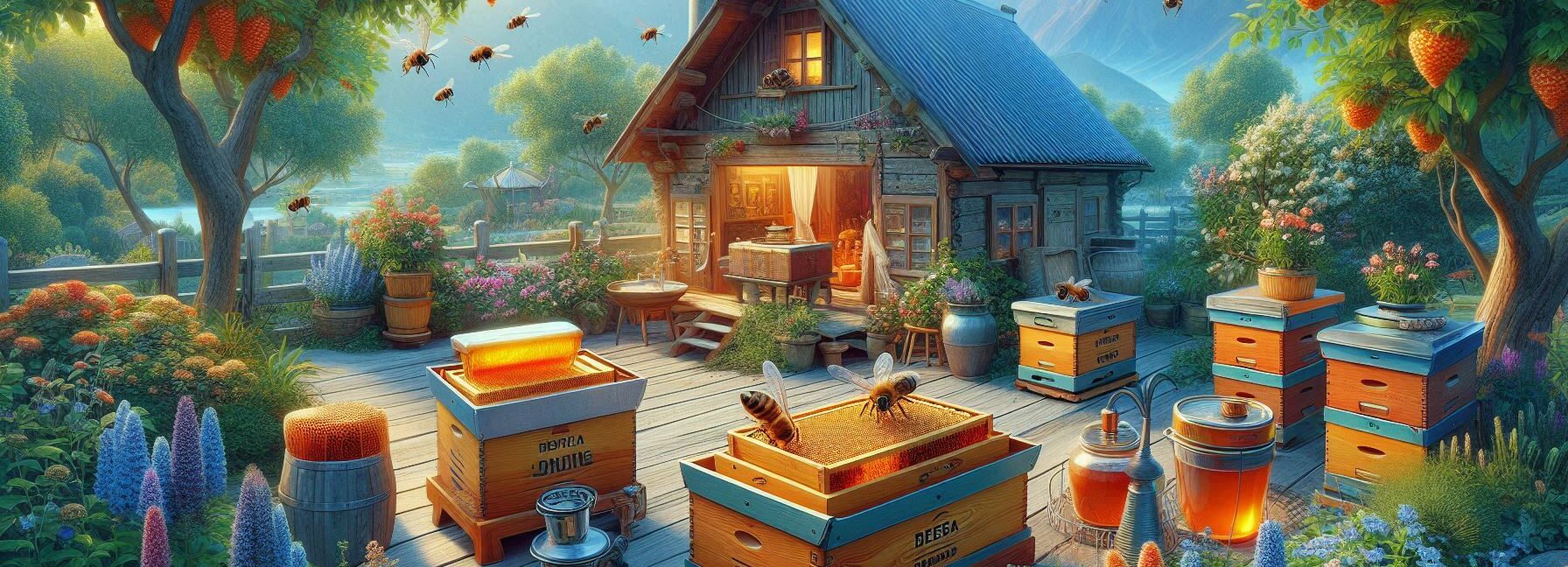Please Note: This post may contain affiliate links. If you click one of them, we may receive a commission at no extra cost to you. As an Amazon Associate, I earn from qualifying purchases.
Last Updated on November 2, 2025 by Kevin Collier
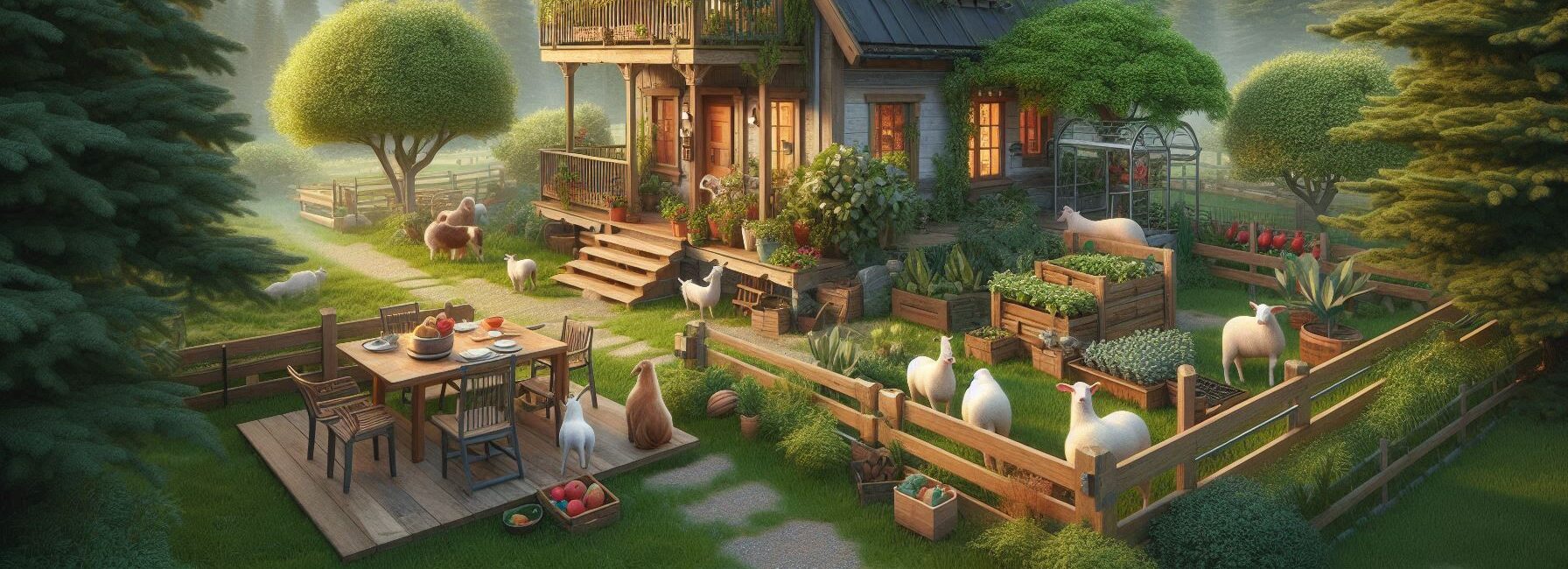
Top Takeaways and Key Concepts
– Evaluate land for resources like water, soil quality, and sunlight to support your homestead.
– Plan your layout for efficiency, including zones for crops, livestock, and living space.
– Choose sustainable practices, like composting and permaculture, to enhance soil health and reduce waste.
– Invest in renewable energy sources, such as solar panels, to decrease reliance on external power supplies.
– Learn skills like gardening, animal husbandry, and food preservation to increase self-sufficiency on your homestead.
It seems like a thrilling endeavor to build a homestead that would last. It's like your own “Hunger Games,” but without the arrows! Picture yourself cultivating luscious tomatoes, nurturing fluffy birds, and getting in touch with nature. Imagine yourself with rubber boots on, feeling the ground under your feet. That's really awesome, right?
Before you rush out to plant those seeds, here are a few things to think about. You want to get off on the right foot. Think forward a little. What do you wish to plant? It could be nice vegetables like carrots and lettuce. Or strawberries that are sweet. Write down your favorites. That will help you stay focused.
Where will you grow all of this? You need a suitable place with decent soil and lots of sun. A small part of your yard, or maybe even a vast garden. Think about how much space you have. Don't forget to look at the sun! Plants enjoy the sun almost as much as humans adore eating.
How about animals? Chickens can be terrific friends. Eggs every morning? Yes, please! They are also fun to watch. Keep in mind that they require a warm place to live and nourishment. You may create a little coop for chickens. That would be a lot of fun!
Also, think about the seasons. Some plants enjoy it warm, while others like it cool. You might have to make plans for each one. Do some research; it's like looking for treasure. If you know what grows well in your location, you can avoid a lot of problems later.
And don't forget about composting! It’s like giving your garden a little treat. Using scraps of food makes the soil very healthy. It also cuts down on garbage. Everyone wins!
It takes time for all of this. Don't hurry. Enjoy the little things, like when you see the first sprout come up through the soil or when you get your first egg. Every small thing you do is part of your path.
This journey is going to be great for you. A sustainable homestead includes growing your own food, keeping your animals happy, and getting to know the planet better. Enjoy every part of it, even if it gets a little messy. You can do this! Keep planting and hoping.
*** Shop for Survival Gear - Tools - Kits ***
Survival Gear - Bags and Backpacks - Knives - Boots/Footwear - Communication
Outdoor Cooking - Gloves - Hydration - Dry Boxes - Water Filtration Systems
Tents - Sleeping Bags - First Aid Kits - Multi-Tools - Flashlights - Fire Starters
Navigation - Survival Food - Night Vision - Headlamps - Stun Guns - Binoculars
Understanding Your Land
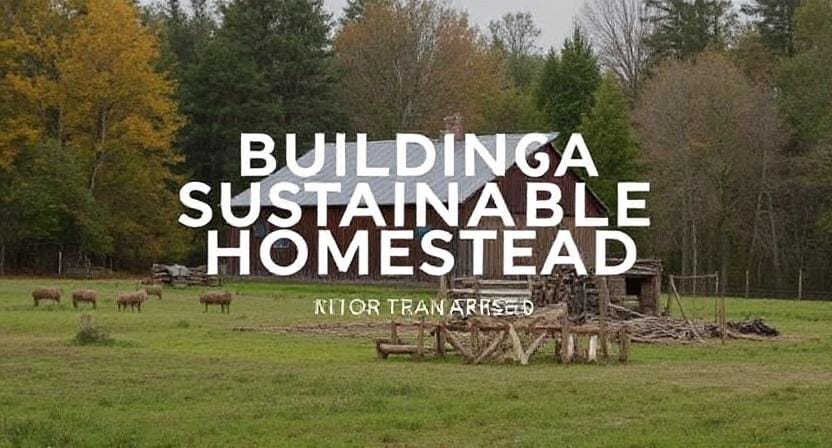
Know thy land! Before making any grand plans involving goats or vegetable patches, take a good look at what you’ve got. Is your property flat like a pancake or hilly enough to make a goat dizzy? Knowing the lay of the land will help you determine what crops can thrive there and where best to place structures.
For instance, if your backyard resembles a swamp after every rainstorm, that might not be the best spot for your chicken coop (unless you're raising waterfowl). On the other hand, if you have sunny spots perfect for growing tomatoes, then congratulations! You’re already halfway to becoming the next heirloom tomato mogul.
Interestingly enough, soil quality matters too. If your dirt looks like it belongs on Mars—red and rocky—you may need to amend it with compost or organic matter. I once tried planting carrots in sand that could double as beach volleyball court material; let’s just say my carrot crop ended up looking suspiciously like orange twigs.
Water Management Strategies
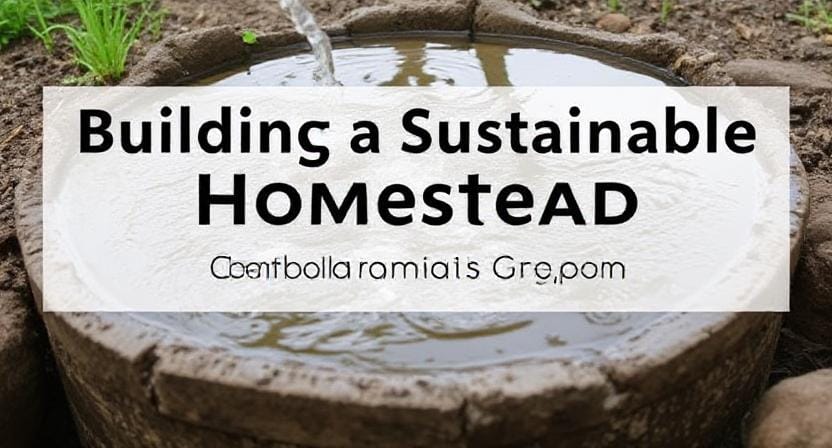
Let’s talk water—because nothing says “sustainable homestead” quite like having access to clean water without relying solely on the local utility company. By the way, this doesn’t mean building an elaborate moat around your property (though how cool would that be?). Instead, consider rainwater harvesting systems or digging a well if conditions allow.
Rain barrels are also fantastic options for collecting precious precipitation from rooftops. Just imagine: every time it rains, you can think of yourself as Mother Nature’s favorite child! However, be sure to check local regulations regarding rainwater collection because apparently some places have rules against “collecting free stuff.” Who knew?
And speaking of water management—don’t forget about irrigation systems! Drip irrigation can save both water and time while ensuring plants get just what they need without drowning them during monsoon season (or when Uncle Bob gets overly enthusiastic with his garden hose).
Choosing Sustainable Practices
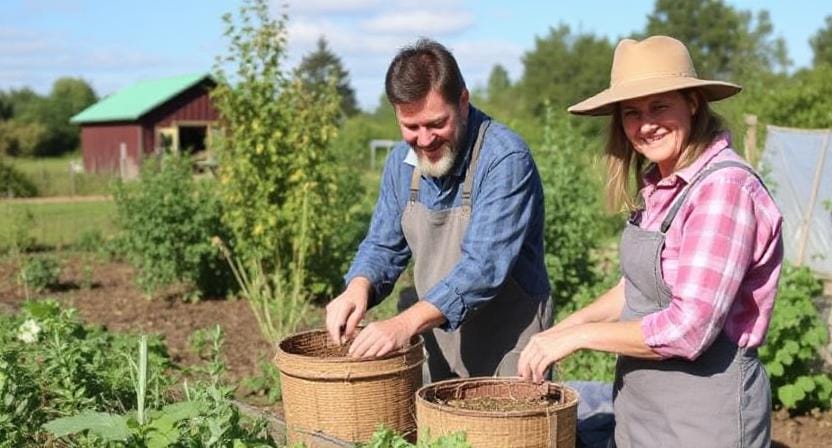
Now comes the fun part: choosing sustainable practices that suit your lifestyle! This isn’t just about going green; it’s about being smart with resources so they last longer than my New Year’s resolutions (which usually die out by mid-January).
Consider companion planting—a technique where certain plants help each other thrive. For example, tomatoes love basil almost as much as I love pizza (and believe me, that's saying something!). Planting them together can improve growth while naturally repelling pests.
Additionally, think about crop rotation. By changing where you plant each season instead of letting crops hang out in their favorite spot forever (like teenagers who refuse to leave their rooms), you’ll maintain healthier soil and reduce pest problems over time.
On another note—composting! It sounds fancy but really just means turning kitchen scraps into gardening gold. Scraps from fruits and veggies are basically nature's way of telling us we should recycle our leftovers instead of tossing them in the trash.
Raising Animals Responsibly
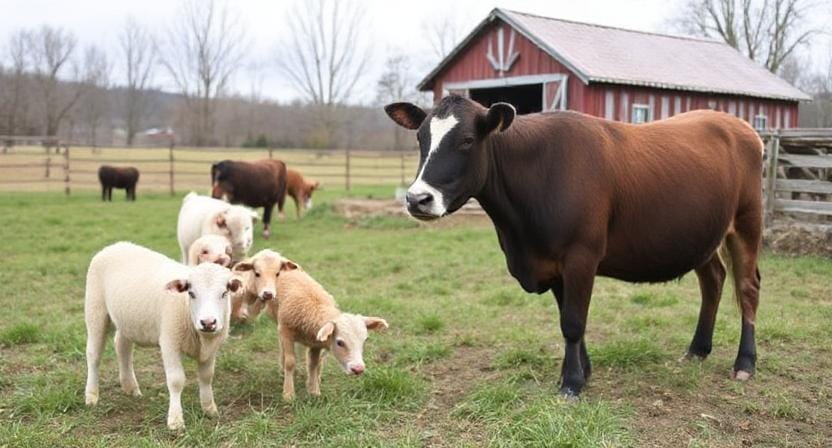
If you've ever dreamed of having chickens clucking around your yard or goats munching away at weeds like they're at an all-you-can-eat buffet—it’s time for animal husbandry 101! But here’s the catch: raising animals responsibly requires planning and knowledge.
First off, research which animals fit best within your space constraints and climate conditions. Chickens are often seen as easy starters—they provide eggs while requiring relatively little upkeep compared to larger livestock such as cows or pigs (who tend to eat everything including shoes left outside).
Next comes housing—every creature deserves its castle! Whether it's building coops for chickens or shelters for goats complete with cozy bedding materials worthy of royalty—it all contributes toward keeping them happy and healthy.
Also remember: animal care goes beyond feeding! Regular health checks ensure everyone stays fit enough to earn their keep—and keeps those pesky vet bills down too!
Creating Community Connections
When establishing your sustainable farm, don't forget how crucial community relationships are. The expression “it takes a village” is true here: the more people that are active in this journey together, whether by sharing resources or giving each other gardening ideas, the better!
Look for local groups that specialize on sustainable practices. They are often full of people who are happy to share what they've learned from years of dealing with difficult zucchinis or getting poultry to provide eggs on a regular basis.
Social media may also be a great way to interact with other homesteaders across the world who are dealing with the same problems (like how many zucchini recipes does one person really need?). Sharing wins and losses is part of what makes this way of life so fulfilling!
Continuous Learning & Adaptation
Finally—and perhaps most importantly—embrace continuous learning throughout this process because guess what? Things will go wrong sometimes…often…okay frequently!
Nature has its quirks that even seasoned veterans find baffling at times; expect surprises along every turn from weather changes affecting crops’ growth rates down to unexpected visits from raccoons plotting late-night raids on gardens!
You know, being open to change is very useful on this homesteading adventure. Just think about it. You learn something fresh every season. Like how to avoid stepping right into the muddy puddles that raccoons love to make! They can be crafty little troublemakers, can't they?
You will learn with each plant you care for. Some might do well, while others might want to take a break. That's fine! Just make changes and keep going. You might move the plant to a sunny place or give it more water. A small modification can have a large effect.
Imagine this: you go outside after a night of rain and notice that everything is covered with drops. What a lovely sight! But then, splat! You walk right into a puddle. It occurs to all of us! Don't worry about it; just keep planting.
Growing food isn't the only thing you do on your journey. It's about how happy it makes you. Think of selecting apples from your own tree or choosing fresh tomatoes. That feels great! While you eat your fresh food, your friends might be at the grocery store. You can tell people about the exciting things that happened on your trips. Do you have bragging rights? Yes, for sure!
Planning and making changes all the time makes a special space, a tiny house full of fun and wonderful food. Every season, you'll find new things to make you happy. It could be the first blossoms of spring or the apples of October. There are so many reasons to celebrate!
Just keep in mind that being flexible and laughing go hand in hand. Things not going as planned is all part of the pleasure. Have fun with every muddy step! You're making something great. Keep dreaming and looking.
Frequently Asked Questions
What should I look for when selecting land for a homestead?
Key factors include water access, soil quality, sunlight, and enough space for livestock, gardens, and housing.
Why is homestead layout planning important?
Good layout improves efficiency by placing gardens, animals, and living areas in logical zones that reduce wasted time and energy.
How do sustainable practices benefit a homestead?
Composting, permaculture, and soil-building techniques reduce waste, improve nutrient cycles, and boost long-term productivity.
Should renewable energy be part of a long-term homestead plan?
Yes, solar or other renewable systems help reduce dependence on grid power and improve resilience during outages.
What skills help make a homestead more self-sufficient?
Gardening, animal care, food preservation, and basic maintenance skills increase independence and reduce outside reliance.
Is raising animals necessary for a homestead?
Not always, but poultry or small livestock can provide eggs, meat, and natural soil benefits if properly housed and managed.
Why is ongoing learning important in homesteading?
Conditions change over time, so adapting and gaining new knowledge helps solve problems and improve long-term success.
Suggested Resources:
The Ultimate Guide to Homesteading
https://www.homesteading.com/ultimate-guide-to-homesteading
How To Raise Backyard Chickens
https://www.backyardchickens.com/how-to-raise-backyard-chickens
Composting 101: How To Get Started
https://www.epa.gov/recycle/composting-home

Kevin Collier is a seasoned survivalist and expert in prepping and homesteading, contributing to WiseSurvive.com. With a deep-rooted passion for self-sufficiency and outdoor survival skills, Kevin shares practical advice, strategies, and resources to help individuals prepare for any challenge. His informative articles cover a range of topics, from essential survival techniques to sustainable living practices, empowering readers to thrive in any situation. Whether you're a novice or a seasoned prepper, Kevin's insights will inspire you to take charge of your readiness and build resilience for the future.

